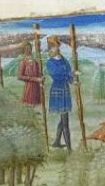
This is the Podcast for the Myths & Legends Walk this Saturday.
To find out about the three walks this Saturday click here

The Past brought to Life

This is the Podcast for the Myths & Legends Walk this Saturday.
To find out about the three walks this Saturday click here
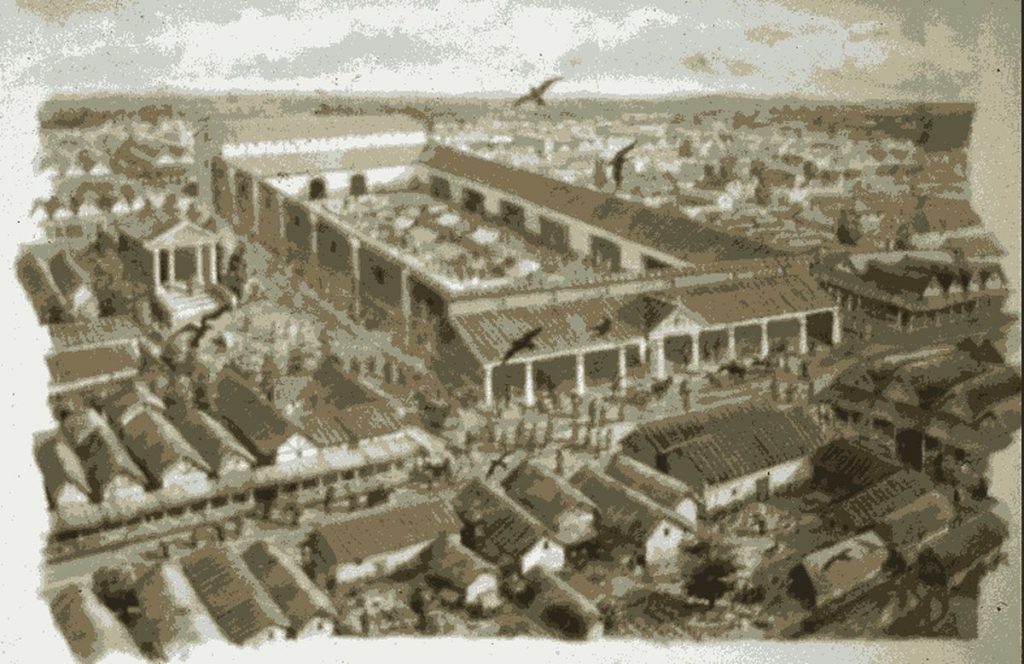
So on Saturday the 30th I am doing 2 guided walks and one Virtual Walk.
ROMAN LONDON – A LITERARY & ARCHAEOLOGICAL WALK
Saturday 30 April 20/22 11.30 am Monument Underground Station
This is a walking tour features the amazing archaeological discoveries of Roman London, and looks at life in the provincial Roman capital of Londinium.
We disembark at the Roman Waterfront by the Roman Bridge, and then explore the lives of the citizens as we walk up to the site of the Roman Town Hall, and discuss Roman politics. We proceed through the streets of Roman London, with its vivid and cosmopolitan street life via the Temple of Mithras to finish with Bread and Circus at the Roman Amphitheatre.
Publius Ovidius Naso and Marcus Valerius Martialis will be helped by Kevin Flude, former Museum of London Archaeologist, Museum Curator and Lecturer.
This is a London Walks Guided Walk
To book https://www.walks.com/our-walks/roman-london-a-literary-archaeological-virtual-tour/
Myths, Legends, May Eve London Guided Walk
Sunday 30th April 2022 2.30pm
The walk tells the story of London’s myths and legends and the Celtic Festival of Beltane.
The walk begins with the tale of London’s legendary origins in the Bronze Age by an exiled Trojan called Brutus. Stories of Bladud, Bellinus, Bran and Arthur will be interspersed with how they fit in with archaeological discoveries. As we explore the City we also look at evidence for ‘Celtic’ origins of London and how Imbolc may have been celebrated in early London.
The virtual route starts at Tower Hill, then down to the River Thames at Billingsgate, to London Bridge and Southwark Cathedral, to the Roman Forum at the top of Cornhill, into the valley of the River Walbrook, passed the Temple of Mithras, along Cheapside to the Roman Amphitheatre, and finishing up in the shadow of St Pauls
This is a London Walks Virtual Walk. Look at their web site for a list of other of their amazing walks.
To book https://www.eventbrite.co.uk/e/253596322427
This weekend I am also doing two Virtual tours
:
Myths, Legends, May Eve London Virtual Walk
Sunday 30th April 2022 7.30pm
The walk tells the story of London’s myths and legends and the Celtic Festival of Beltane
To book https://www.eventbrite.co.uk/e/myths-legends-may-day-london-virtual-walk-tickets-251923047617
And on Monday evening
A Virtual Tour Through The Whole Island Of Great Britain. No.5 Edinburgh
Monday 2 May 2022 7 pm
A Virtual Walk Through the Athens of the North
To book https://www.eventbrite.co.uk/e/256923664597
Hope to see you this weekend.
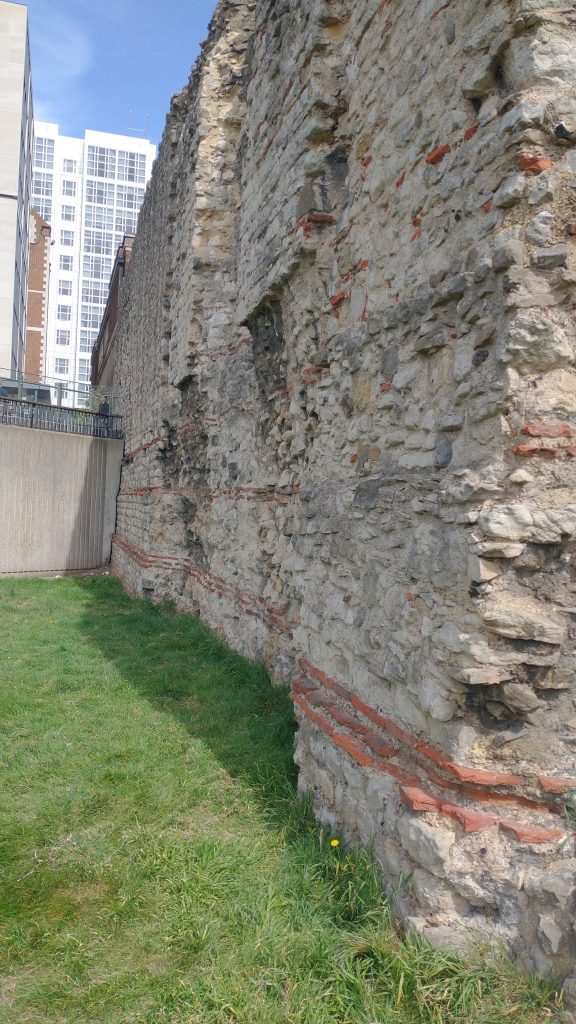
Yesterday I had a meeting with a couple of archaeologists at Tower Hill to discuss my recent letter to the London Archaeologist which suggests a piece of conservation of the wall was wrong and based on an misunderstanding of the physical remains. To my relief they agreed with my assessment of the wall and we agreed to follow it up.
It is a complex issue and I will try to upload a copy of the report at the bottom of this page. But briefly. at some point in the past the inner face of part of the wall collapsed (the piece closest to the camera). You can see that only the bottom Roman tile courses continue to the camera end of the wall – the ones above were swept away in the collapse on the inner face, they survived on the outer face.
The section just visible at the front used to show this collapse graphically because only half of the width of the tile courses survived (i.e. on the outer face not the inner face.) At some point someone in the 1980s picked up some fragments of the tile and stuck them superficially on the wall to complete the tile courses. This shows a complete lack of understanding of the archaeology of the wall and ignores the collapse. You can just see the end of that false tile course a few feet above the bottom genuine Roman tile course.
Not a great nor important bit of history but the Wall Walk plaque is wrong on this matter too so it would be good to get that changed.
Its difficult to date the original collapse but the wall at the top looks clearly medieval.
What was even more exciting is that while waiting for the archaeologists to turn up I was looking from afar at the section above. If you look very carefully at the wall nearest the camera you will see a few feet above the bottom of the wall a string of stones which are aligned to the Roman tile course and it seems that whoever recreated this section of the Roman wall after the collapse tried to copy the Roman wall but did not have any tiles so did it in stone. This part of the ‘repair’ is clearly different in style to the medieval repair above (although I had not noticed the difference in 40 years of looking at this wall).
I was very excited about this and thought maybe this is Post Roman work, because it is different to the section above which is medieval, and mimicking or continuing the Roman design the Roman. Identifying a pre-Medieval repair to the wall would be, I think, unique.
I pointed it out to Jane Sidell and Jenny Hall, and they were also interested in this finding. Jane pointed out that it seems that whoever did this seems to have been copying the Roman core of the wall just to the left, rather than copying the original Roman inner face which you can see at the end of the wall away from the camera. She thought it was more likely to have been a 19th or 20th Century repair. But we are following it up.
Here is the letter as published in London Archaeologist Vol.16 No. 2 / Autumn 2020
A longer and more extensively illustrated version is available to see here:
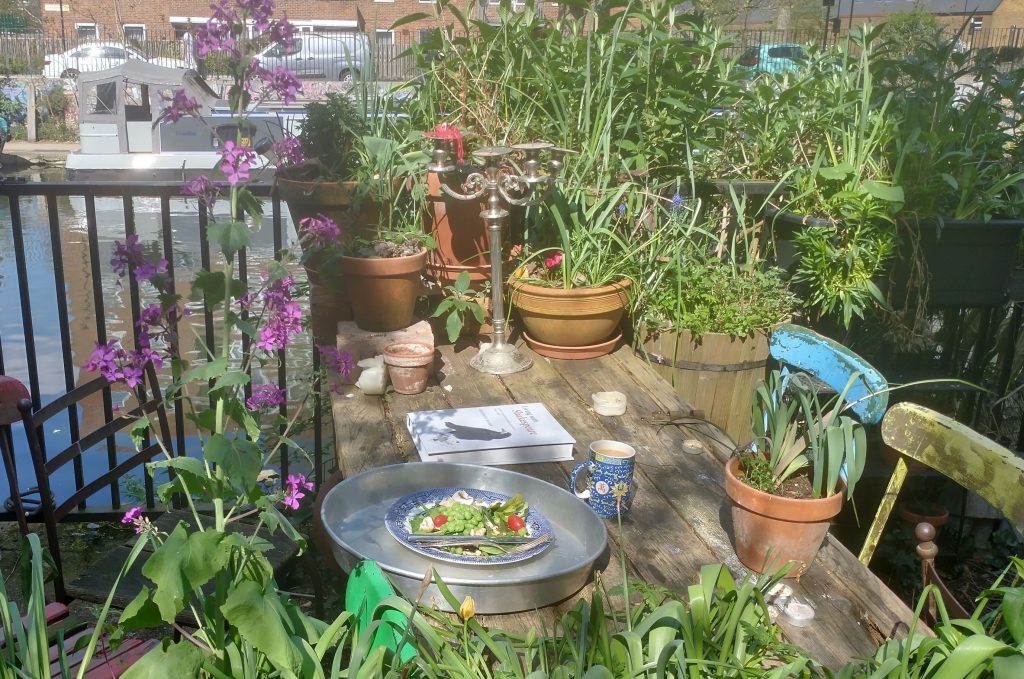
The first sunny day of the year inviting enough to eat in the garden, partly because is is north facing, and its only now getting a decent time in the sun; and partly because it was a stonking warm sun. The Haggerston Rivera in the background is full of people deciding that this is the day to get it all out out in the sun. But also there is still a small proportion of people dressed ready just in case a chill north wind arrives unexpectedly.
Its also the death of the daffodils day – at least in my garden. Still a few tulips and even one or two yet to bloom. But the star of my garden at the moment is Honesty, which you can see to the left of the table (an old door repurposed). I first grew it on the balcony and it has now spread down and appeared in three places, and is rather lovely.
Its latin name is Lunaria annua because the silver seed pods look like a full moon, but they also look like silver coins. Therefore it symbolises wealth. It’s name Honesty is said to come from the translucent pod revealing the seeds beneath, honestly.
The book you see on the table s written by a friend from my Museum of London days who has recently published a book on Shakespeare’s time living in the Parish of St Helen’s near Bishopsgate.
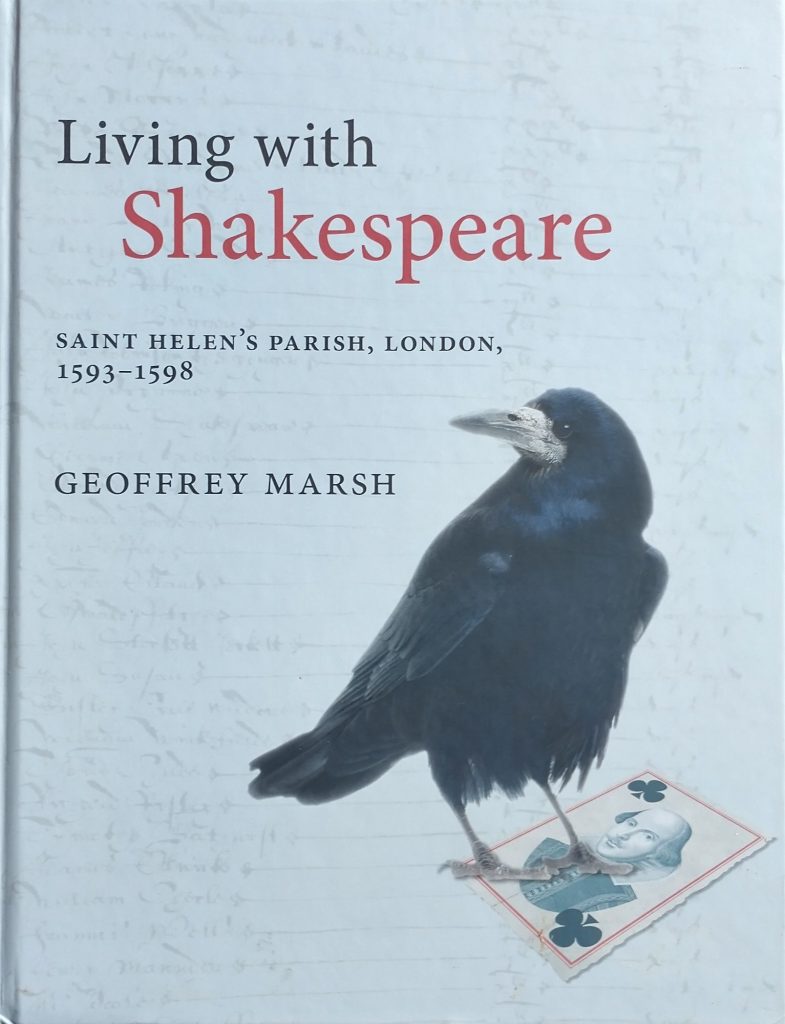
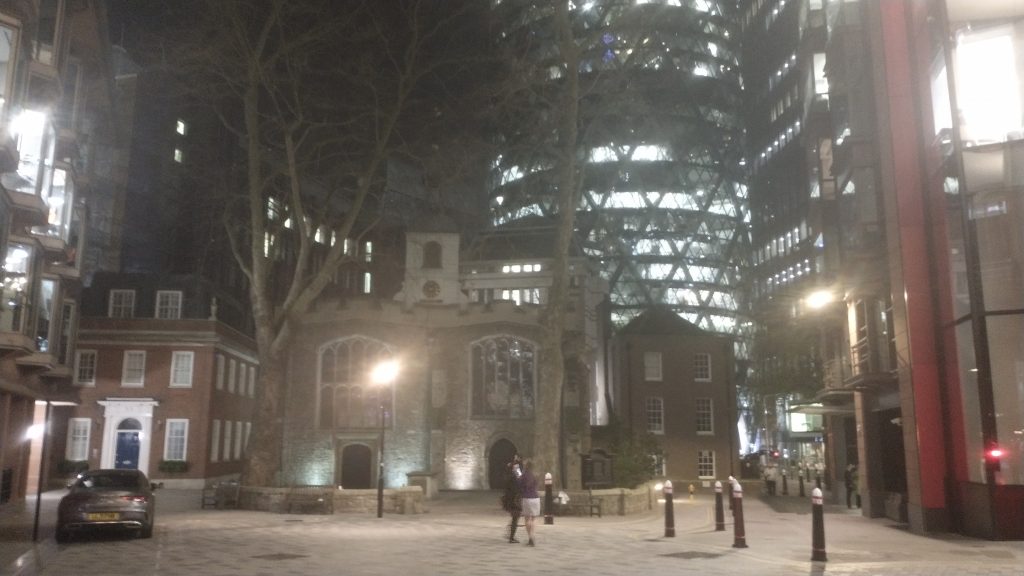
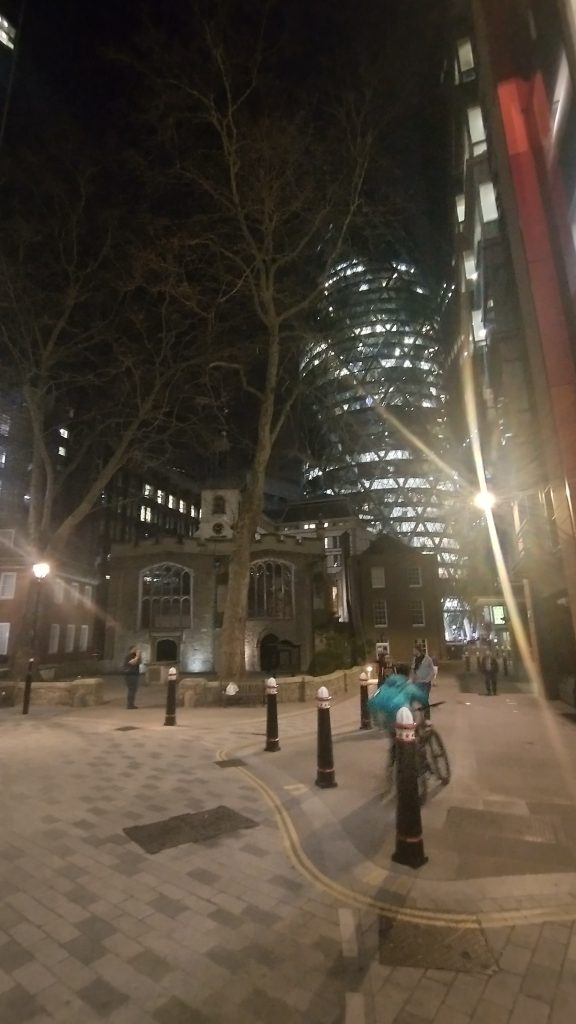
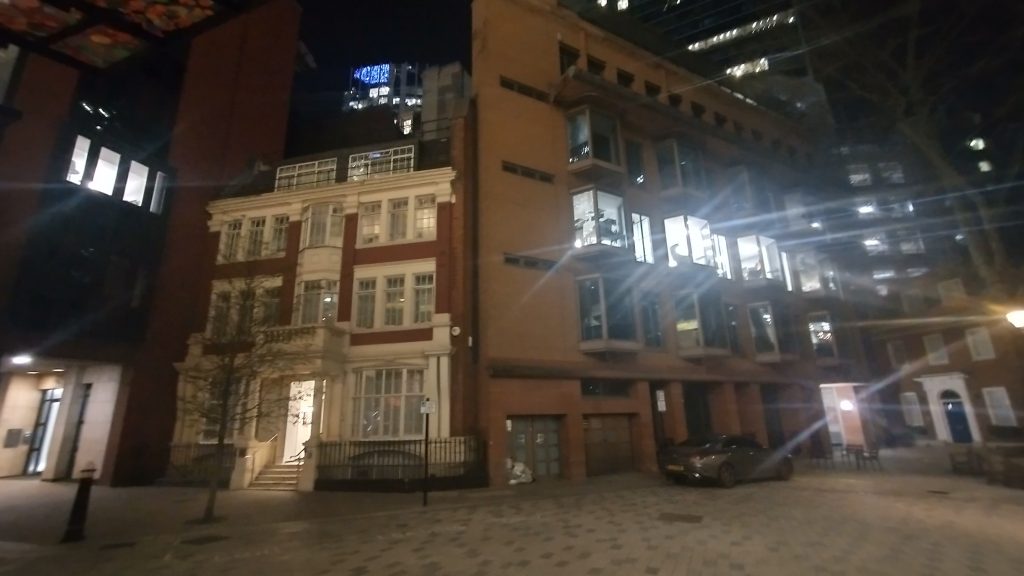
e site of the building on the right. Great St Helens StPhotos taken by the author last night.
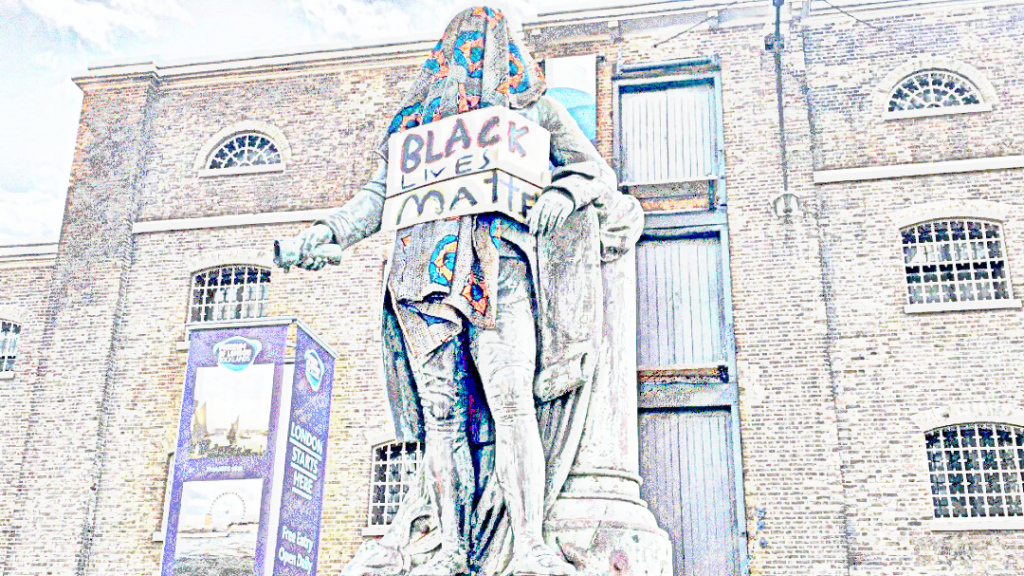
Robert Milligan once reigned supreme outside the Museum of London in Docklands as a representative of the West Indies merchants who proudly set up the West Indies docks. Now he has been removed from his prestigious position and acquired by the Museum of London. Their Docklands Museum can be seen behind the statue in this sketch. According to a statement by the Museums Association he will be ‘fully contextualised’ in the museum. The docks were set up to to maximise profits from the slave driven sugar plantations in the West Indies. Milligan was the Deputy Chairman of the project.
The museum has an excellent display on the slave trade.
Sorry for gap in posts as I’m recovering from surgery following an accident whereby a taxi driver opened his door and knocked me off my push bike so typing one handed and dealing with images is quite difficult at present. Please adopt the ‘Dutch Reach’ when opening car doors and be careful.
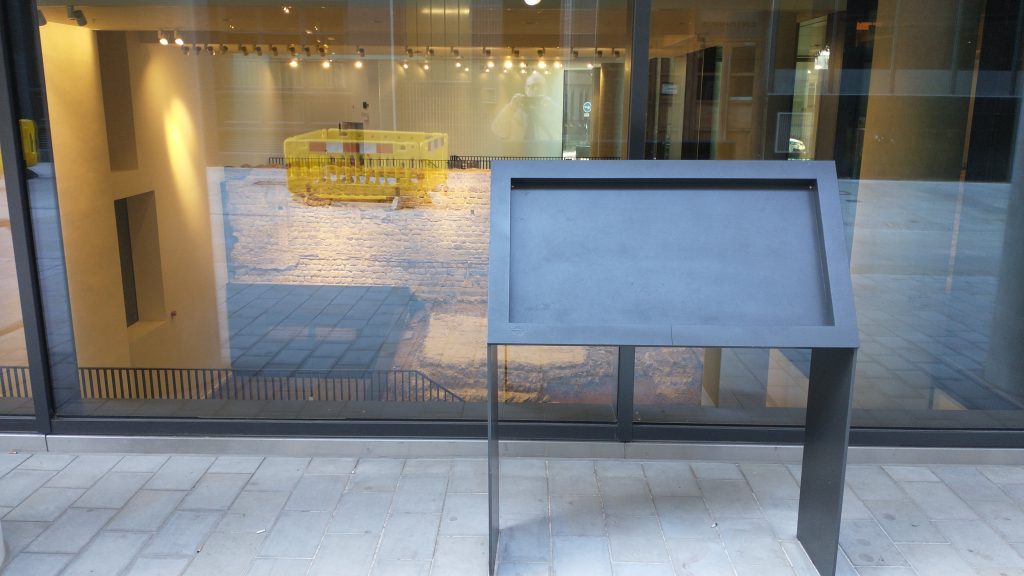
I often walk past Crosswall; a street in the east of the City of London that cuts right across the line of the Roman and Medieval City Wall from Aldgate to the Thames at the Tower of London. Several sections of the wall are still standing in this section – in Cooper’s Row and Tower Gardens behind Tower Hill Tube station, but this is the only Roman Bastion on display.
I, briefly, worked on the site in Crosswall that uncovered this Bastion. It was in the 1970’s in an excavation led by John Maloney. I remember, particularly, the entertaining tea breaks which John led. At the end of the excavation the developers decided to keep the remains and put them on display. This is quite unusual sadly. I visited the remains once or twice or my guided walks and always mention them but it never seemed an absolute necessity to visit probably because the display was not so inspiring or difficult to access. I can’t remember in fact how accessible the remains were.
A couple of months ago I found myself in Vine Street and was surprised to see the bastion through a clear plate glass window. This week I went again for a proper look and was really pleased to see what a great job has been made of the redisplay. The building that was put up after our excavation has been pulled down and a modern new glass building stands in its stead. When I visited they were hoovering it and preparing the display – not yet having put in the information in the information holders, but obviously soon to be launched to the world.
Now you can see the Chalk Bastion foundations and also a good section of the Roman City Wall. But not only from one side but both inside and outside the City. The Wall was built around 200 AD, the Bastion was added in the late Roman Period in the late 4th Century. Romans used them to place a catapult called a Balista. The Crosswall excavation was, I think, the first modern (post 1970s) excavation of a Bastion. You can find it between Crutched Friars and Vine Street north of Crosswall.
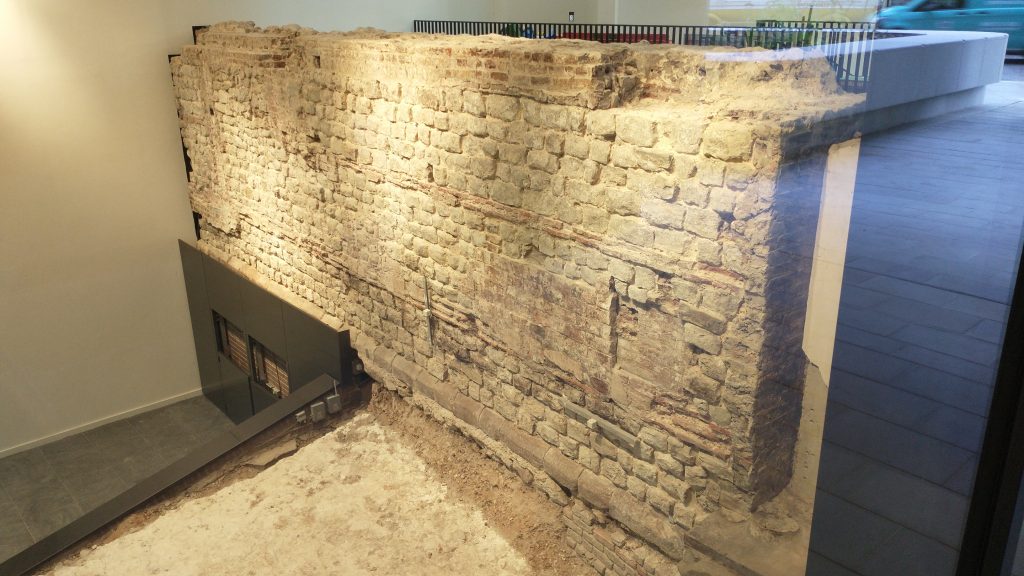
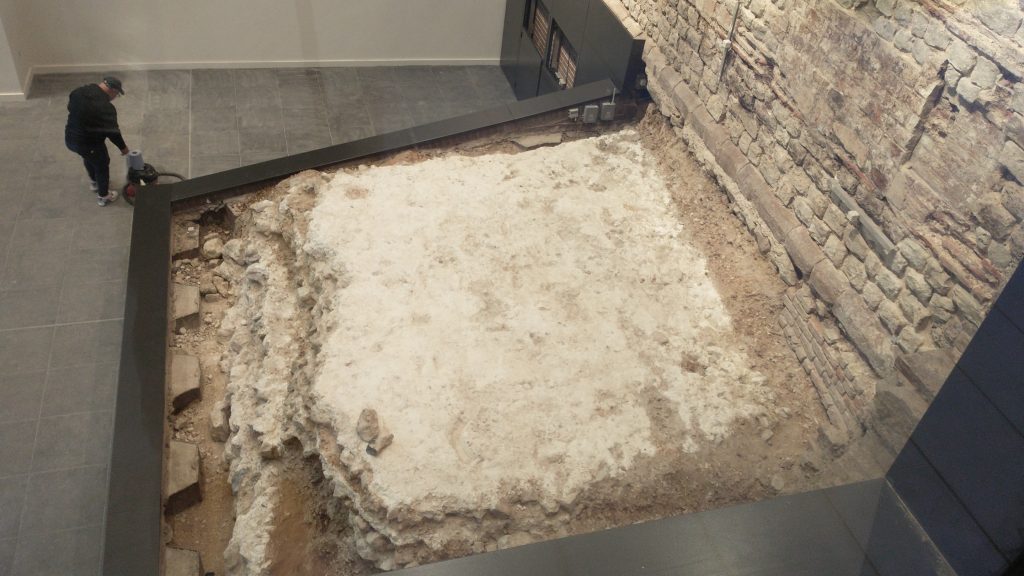
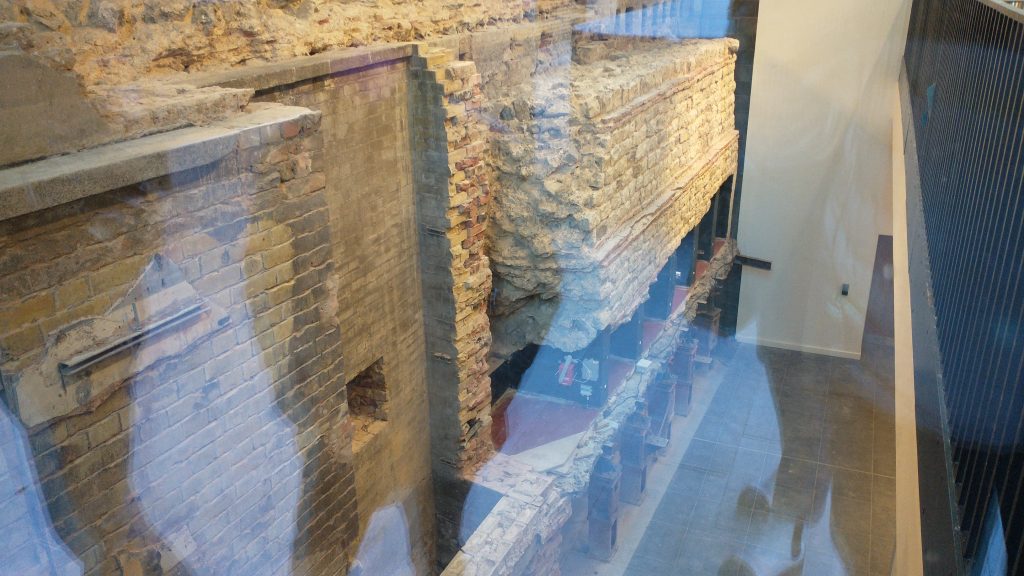
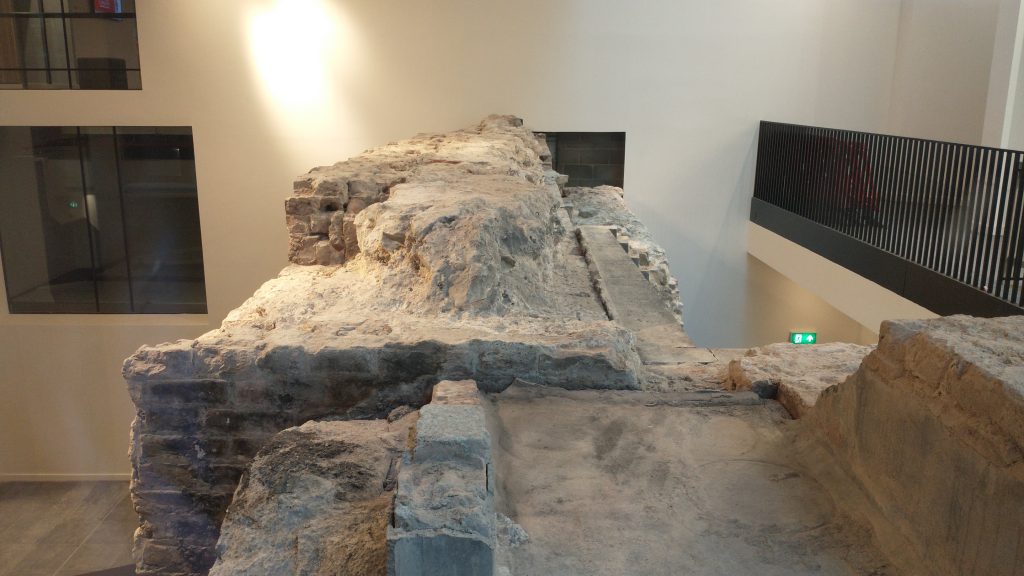
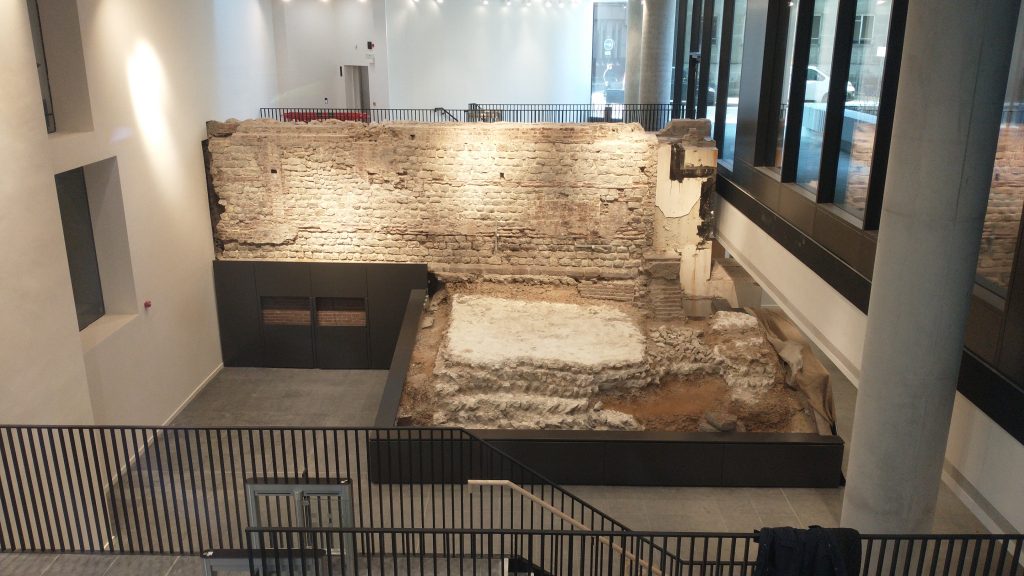
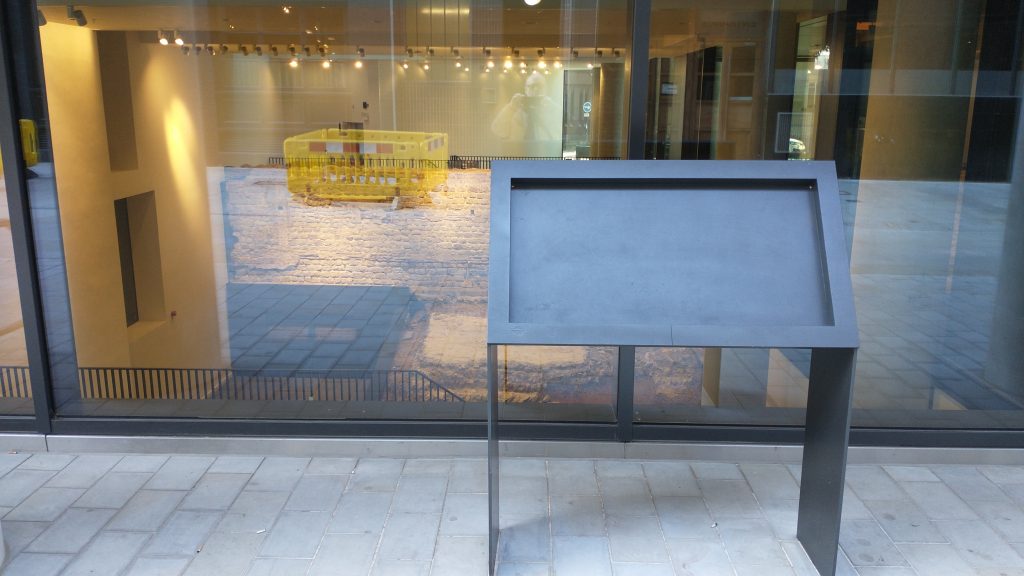
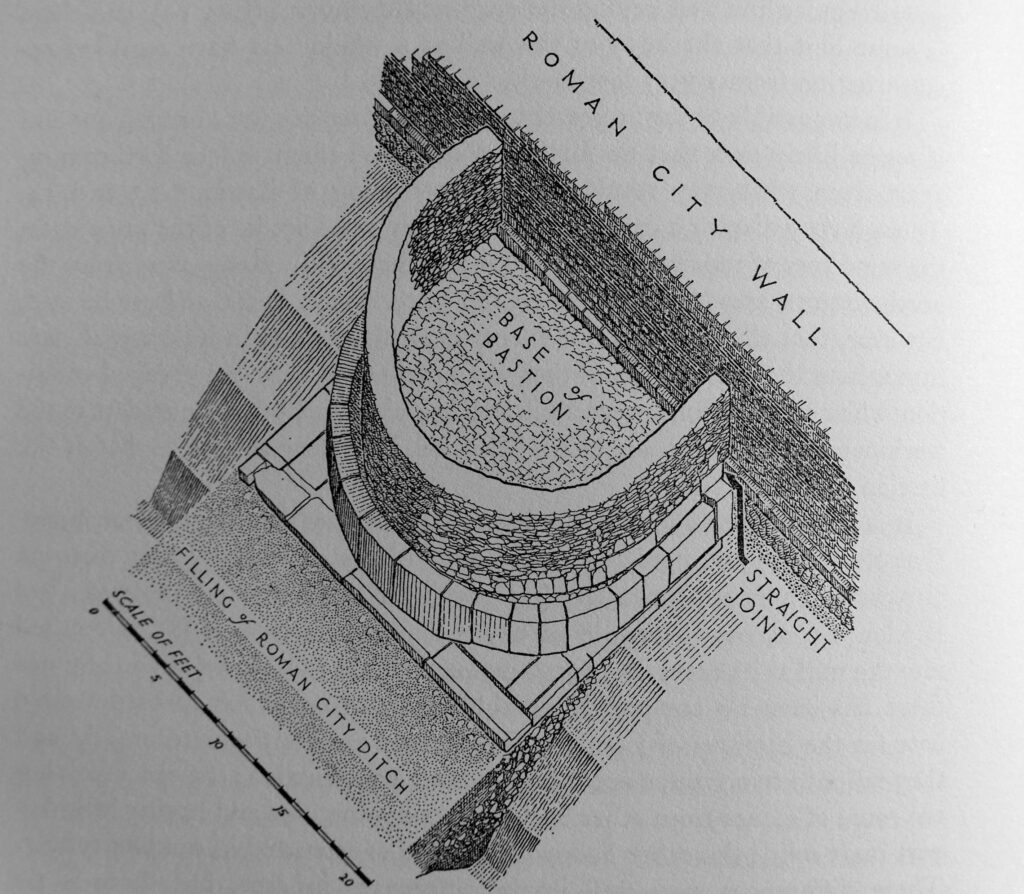
I have republished my post of the Chinese New Year which you can see here:
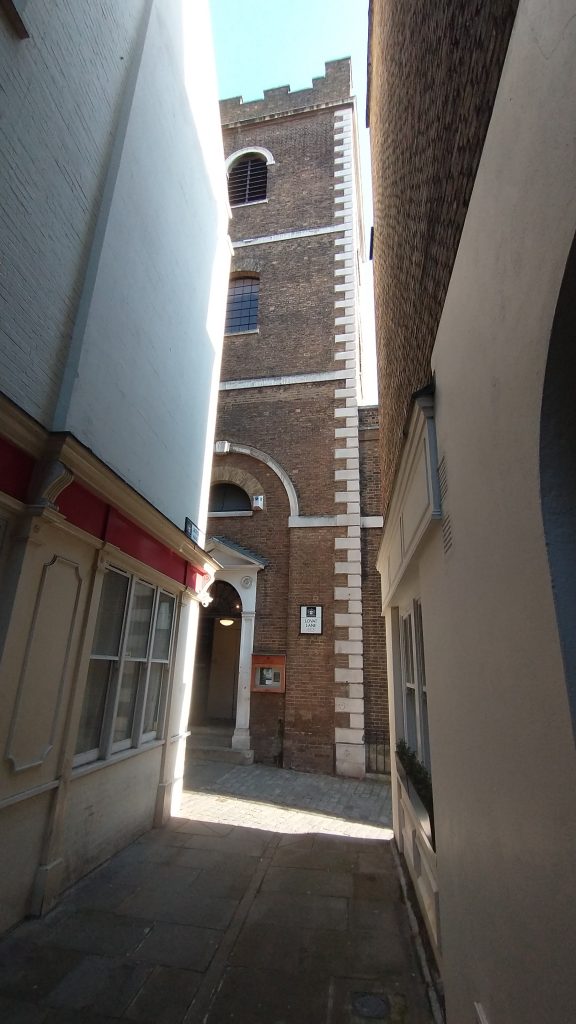
So, having finished a walk around Chaucer’s London for a mother and her two very bright home educated children. I had to walk back over London Bridge and through the City to Aldgate where Chaucer used to live (and where I had parked my bike).
I took a couple of short cuts which I don’t usually take although often in and around this area. St Mary in Lovat Lane was open so I went in to find this amazing relief.
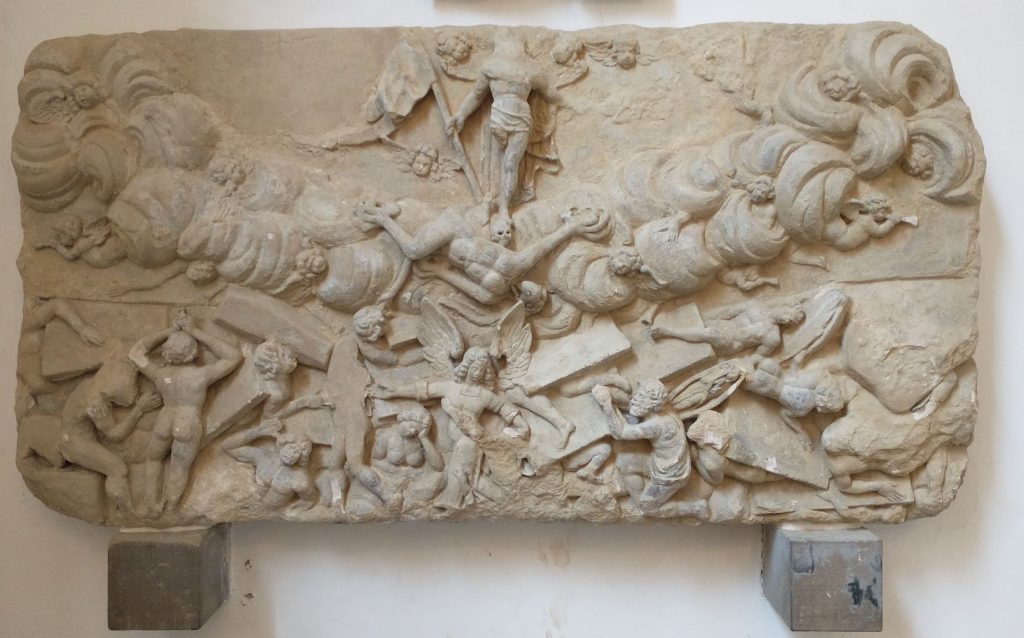
The panel beside it suggests its a sculpture of hope. Well yes, of sorts, if by hope you mean, facing your maker. It represents scenes from the end of days from the Book of Revelation. Jesus stands on a skull, trampling upon Satan, and below the heavenly clouds the Archangels, direct the newly risen from the coffins and graveyards to the Day of Judgement.
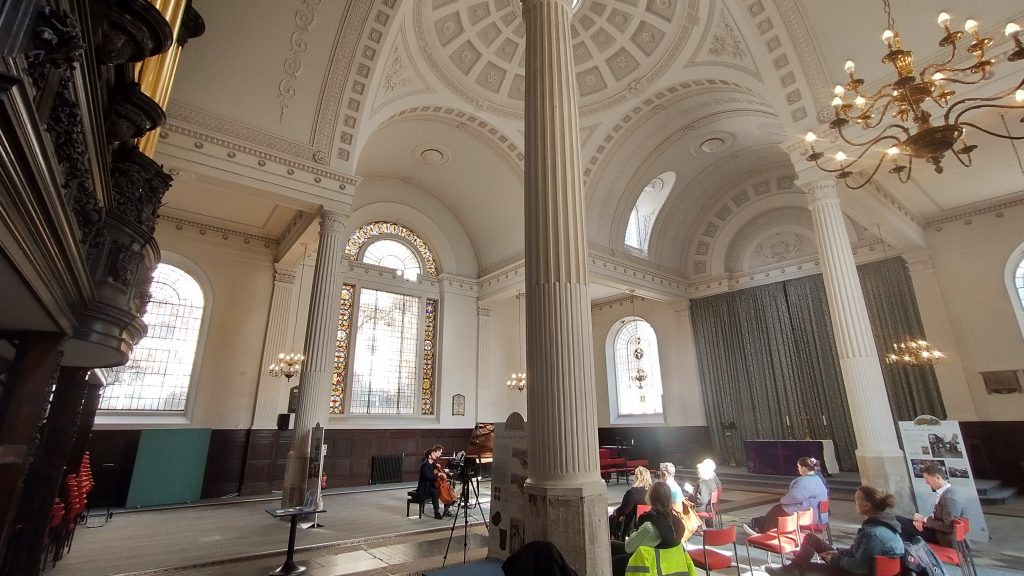
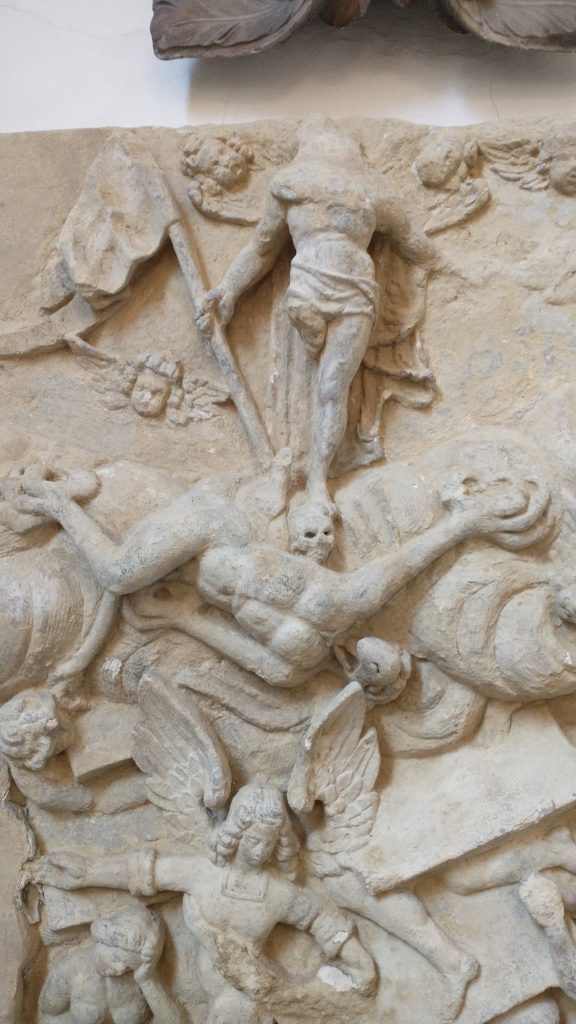
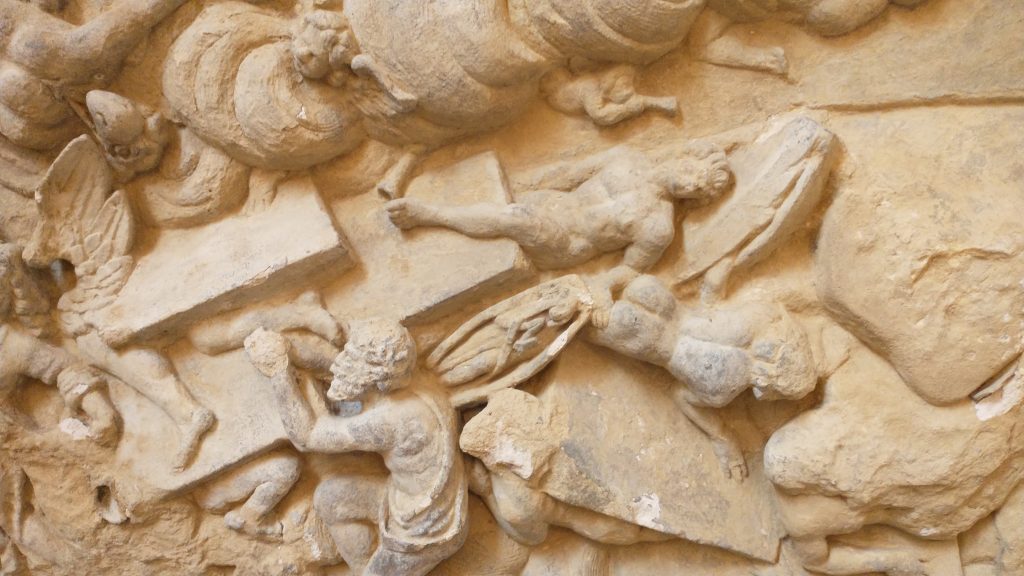
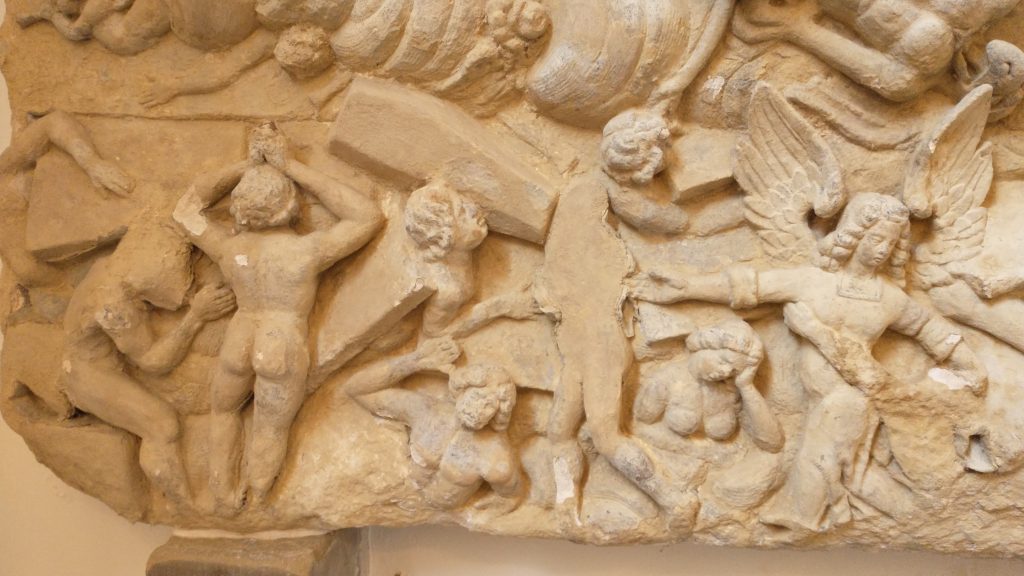
I then went past St Margaret Pattens, another Wren Church and was delighted to see a little display on pattens – overshoes worn to keep shoes clean. My ancestor was a beadle for the Patten makers.
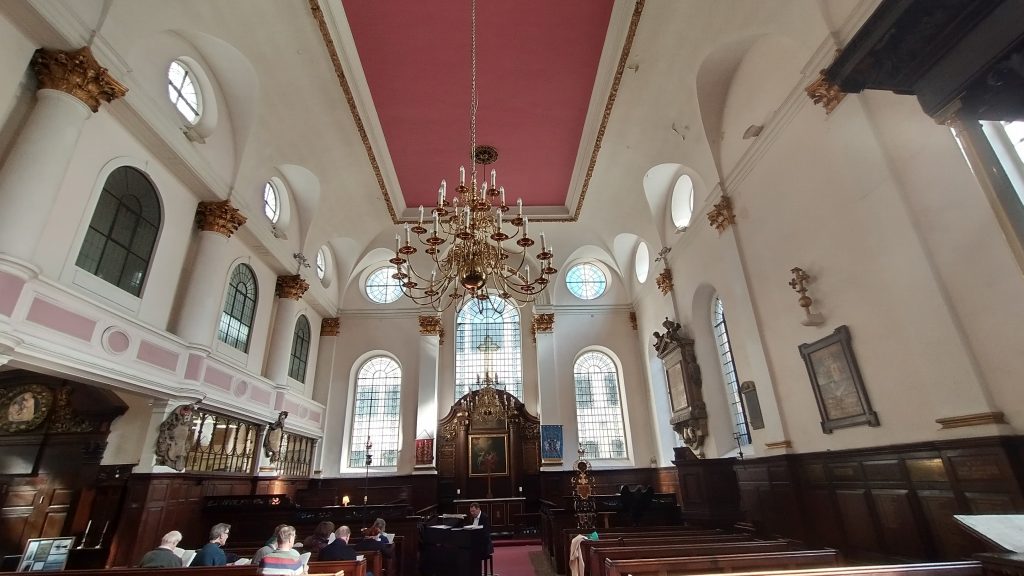

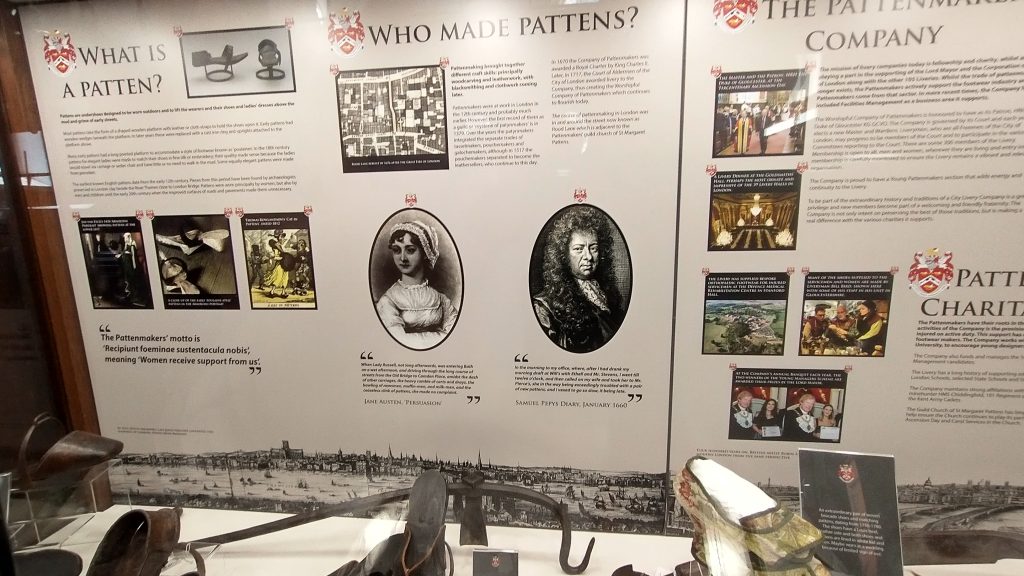
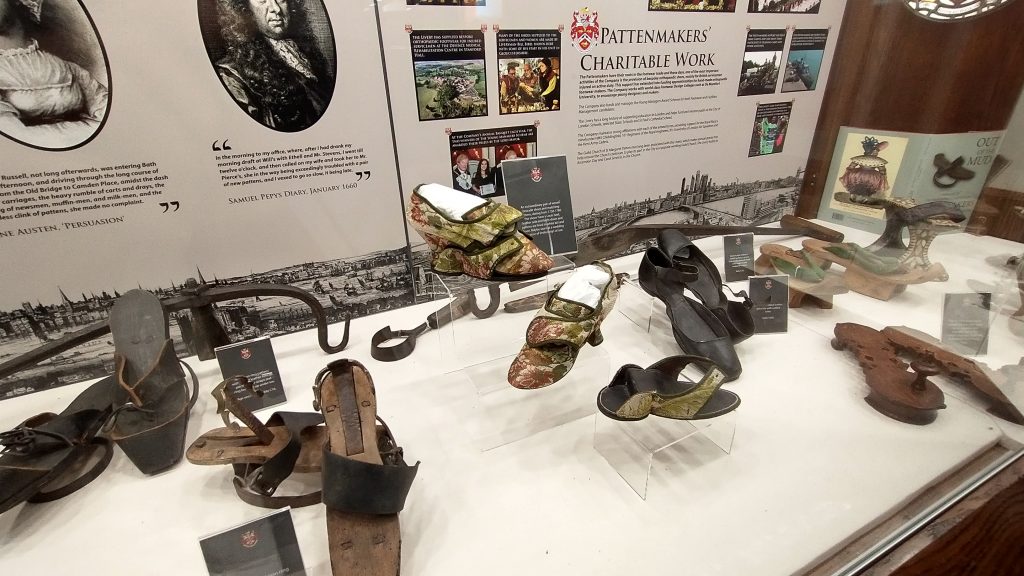
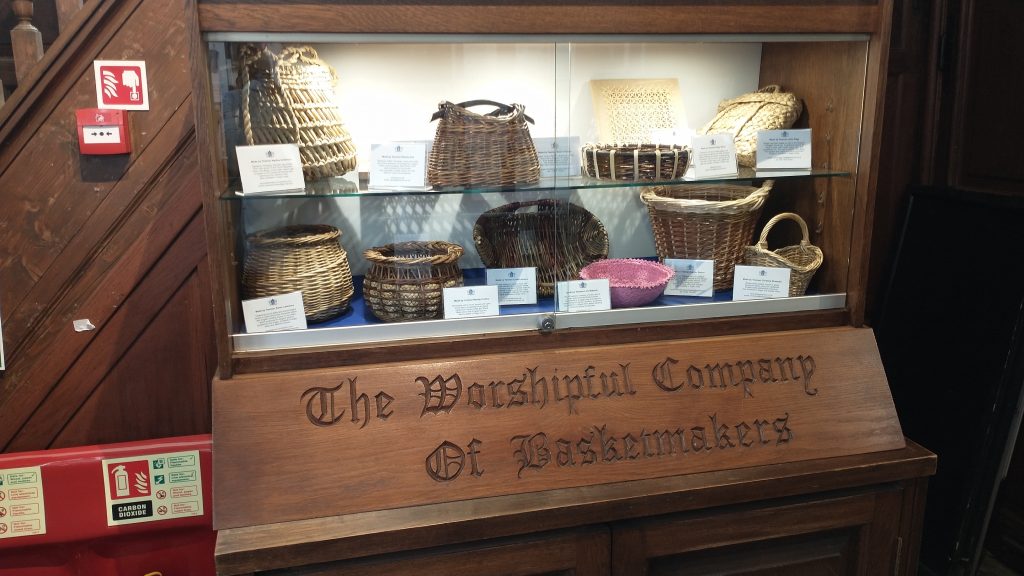
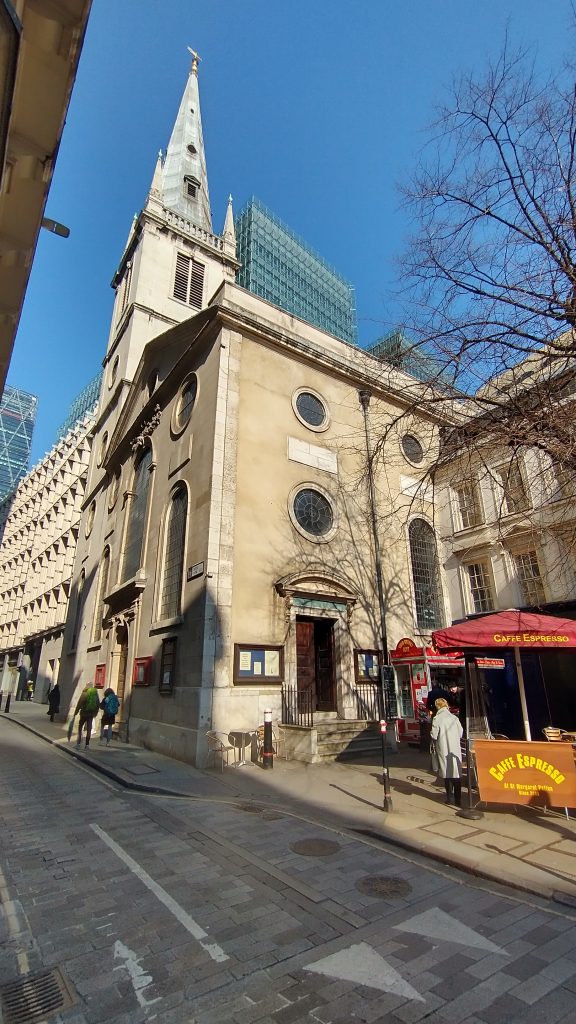
Just in case you have not heard of the recent discovery of this mosaic on the Bankside in Southwark. Below is what Salon, the online newsletter for the Society of Antiquities, said about it. Below that is the Guardian’s coverage.
This site is next to a site that was worked on in the 1970s/1980s, called Calvert Buildings. The site was developed in the early Roman period with strip buildings made of timber, which were replaced by a stone building identified as a possible ‘Mansio’ – an official Roman travel lodge. I think, although useful details are hard to find in the gush of admiration for the mosaic. that it is thought the Mosaic is part of the Mansion.
To sign up for Salon click here. This is what Salon said about the discovery:
Just minutes from the Shard, Museum of London Archaeology (MOLA) have unearthed a beautiful Roman mosaic, featuring colourful flowers and geometric patterns. The mosaic, at over eight meters long, is the largest found in London for over fifty years and dates to the late second or early third century.
long, is the largest found in London for over fifty years and dates to the late second or early third century.
The main panel of the mosaic features large flowers, surrounded by twisted-rope bans, across a red tessellated floor. A smaller nearby panel, as well as the main mosaic, feature geometric elements and lotus flowers and both are remarkably well preserved. David Neal FSA, an expert in Roman mosaic, says that the design likely was created by a team of mosaicists known as the Acanthus group, who had a unique style. Indeed, there is an impressively close parallel between the smaller panel and another mosaic discovered in Trier, Germany, demonstrating that the

group travelled across Europe.
It is believed that the mosaic, which was discovered a month ago, was part of a triclinium, a dining room with couches on which people would recline to eat and drink. This was likely part of a Roman mansio, an upmarket establishment offering accommodation, stabling, and dining facilities for state couriers and officials travelling to and from London.
Perhaps appropriately, the site is being redeveloped as ‘The Liberty of Southwark’, a complex of offices, homes and shops. The mosaic will be lifted later this year to be preserved and conserved off site, and the eventual aim is for the work to be on display publicly.
Image credits: MOLA/Andy Chopping’
Salon: Issue 484 23 February 2022
Lavish Roman mosaic is biggest found in London for 50 years | Roman Britain | The Guardian
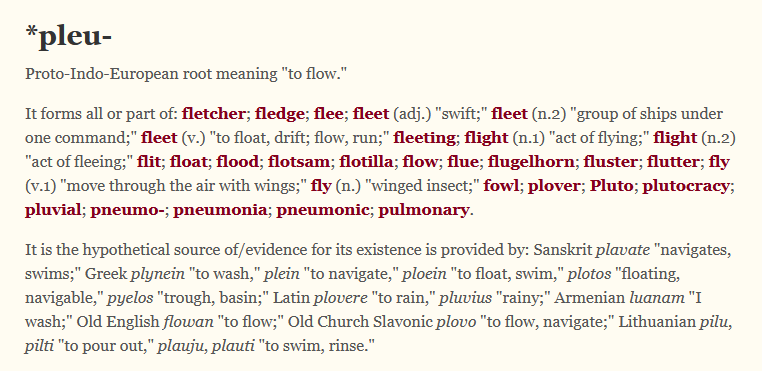
Richard Coates in a ground breaking article ‘A New Explanation Of The Name Of London’ Transactions Of The Philological Society Volume 96:2 (1998) Pgs 203 – 229 suggested the original name of London was Plowonida – or settlement by the wide flowing river. He deduces its name by comparing different versions of ‘London’ in different Celtic dialects and traces them back to what he believes is the common origin. This is the root *pleu meaning fleet flowing river, and onida which means ‘settlement by the’.
So, in the 2nd Millennia BC – the Bronze Age, there was a settlement by the flowing River. He thinks the Thames was the name for the river upstream of the Pool of London, and where it widened into an estuary it was called the Pleu. Etymonline.com says of the name Thames:
Thames – River through London, Old English Temese, from Latin Tamesis (51 B.C.E.), from British Tamesa, an ancient Celtic river name perhaps meaning “the dark one.” The -h- is unetymological (see th).
https://www.etymonline.com/word/thames
So, in the Bronze Age there must have been a small settlement probably in the area of the City or on the south bank in Southwark. It’s possible we have already found it in the occasional findings of post-holes, gullies, plough marks, brushwood platforms and burial mounds (particularly in Southwark) that have been found or we may be yet to find it. Or we may never find it. And if we do, unless it is significant in some way or has a signpost on it saying (“You are entering Plowonida”) we will never know.
Of course Coates may be wrong, but he is the most distinguished linguist of recent years to put his head about a dangerous parapet. Antiquarian journals were full of suggestions for the name of London. Previous suggestions include Lake Side Town, Lud’s Castle, Londinos’s settlement. None have survived scrutiny, and very few people were willing to make a guess after the late 70s, until 1998 and Richard Coates. However they all seem to accept that the name is pre-Roman in origin.
Archaeologists since the 1970s have been completely convinced there was no City before the arrival of the Romans. So, why bother finding the original name of a place that did not exist? However, last year in an excavation underneath Amazon’s new HQ, Principle Place, just north of Liverpool Street station, was found over 400 pieces of neolithic pottery, and evidence of extensive feasting. If you put this together with the burials found in the water margins of the River Thames, and the incredible finds of prestige metal objects: helmets, shields, swords, cauldrons, etc. from the River a case is beginning to be made (by David Keys in the Independent for example) that the area of the City of London might have been an important place for gatherings. So is it possible that the origins of London are as part of a ritual landscape?
If this is taken seriously it has a lot of implications for received opinion.
I discuss this and other issues in my Myths and Legends Guided Walks for London Walks. Click here to see the details
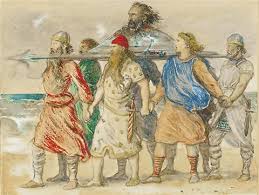
THURSDAY. ARCHAEOLOGY OF LONDON – every Thursday 6.30 PM Click here for details and how to book.
SUNDAY
THE ARCHAEOLOGY OF LONDON BRIDGE, SOUTHWARK & BANKSIDE GUIDED WALK
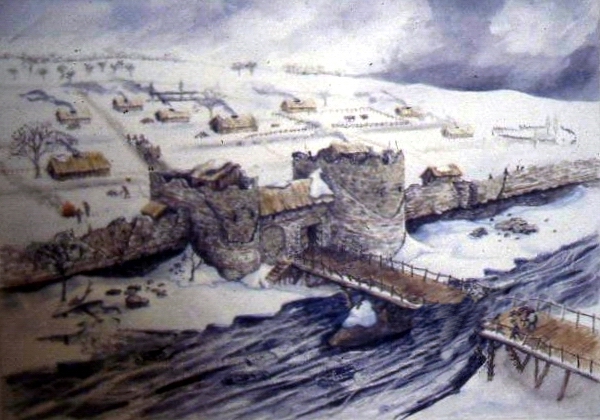
Sunday 6 February 2022 2.30pm Monument Underground
The walk explores the area around the Bridge and London Bridge’s history
London Bridge is not only an iconic part of London’s history but it is also the key to much of the History of London. On this walk we explore the area around the Bridge.
On the north side we explore evidence for the origins of the Bridge, and the early Roman Port of London. We then cross the Bridge discovering the many rebuilds and the wonder of the famous London Bridge with all its houses along it. On the south side we explore the Historic Borough of Southwark which, archaeology has revealed, is very much more than just the first suburb of London.
We range from the prehistoric finds in the River, to the excavation of the Theatres of Shakespeare’s London on Bankside.
This is a London Walks Guided Walk. Look at their web site for a list of other of their amazing walks. The walk needs to be booked via this London Walk link. To Book:
Podcast for the Walk
THE ARCHAEOLOGY OF LONDON BRIDGE, SOUTHWARK & BANKSIDE VIRTUAL WALK
Sunday 6 February 2022 7.30pm
The virtual version of the London Bridge Walk.
To book